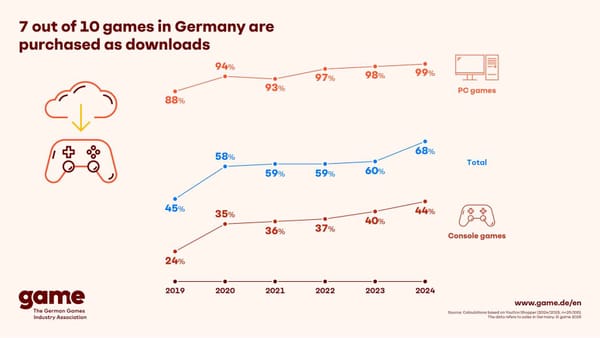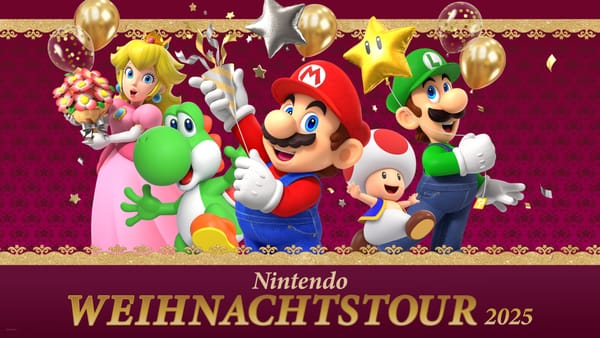Only One in Three Games is Sold Physically in Germany




The digitization of game distribution continues to advance, as new figures from game show. Physical sales of games on PC are effectively dead. For consoles, the digital share is rising to 44 percent.
The trend away from physical sales of games towards purely digital distribution has been clear and irreversible for years. Nevertheless, digital distribution of games has taken another big leap forward in Germany in 2024. This is according to data from the industry association game, which was determined on the basis of a YouGov survey. According to this, the share of games sold digitally rose by 8 percentage points to 68 percent in 2024.
Mobile games are not included in this analysis. These would also skew the picture massively in favour of digital distribution. Mobile games are marketed exclusively digitally and predominantly as free-to-play, in which publishers do not generate revenue from the distribution of the game in the form of an installation, but only from the purchase of items. Therefore, the number of free installations is pushed by huge marketing spendings from the publishers.
The new data confirms that physical distribution in the PC sector has effectively ceased to exist. The share of games sold digitally rose by another percentage point to 99 percent. The picture is different in the console sector. Although the share of digitally marketed games also rose by 4 percentage points, with a digital share of 44 percent, more console games are still sold physically than digitally.
"Buying games as downloads is more popular than ever," comments Felix Falk, Managing Director of game. "Compared to the classic physical media available through retailers, downloads are a very easy way for people to buy games. The trend towards exclusively digital sales – whether of indie, blockbuster or, more recently, early access games – is further driving the prevalence of downloads. At the same time, console players, especially, are still opting for games on physical media. These remain highly popular as additions to the game collections on the players’ shelves, for example, or as special limited editions."
The results of a second analysis, which compares the tendency to buy digital products with age, come as no surprise. Apart from the very young target group of 10- to 19-year-olds, who are likely to be influenced at least in part by their parents, the younger the buyer, the higher the proportion of digital purchases.

Never miss anything from the German, Swiss and Austrian games industry again: subscribe for free to our Daily newsletter and get all news straight to your inbox.








